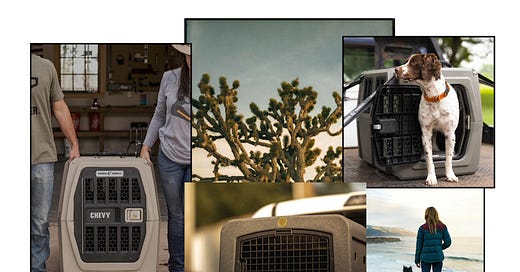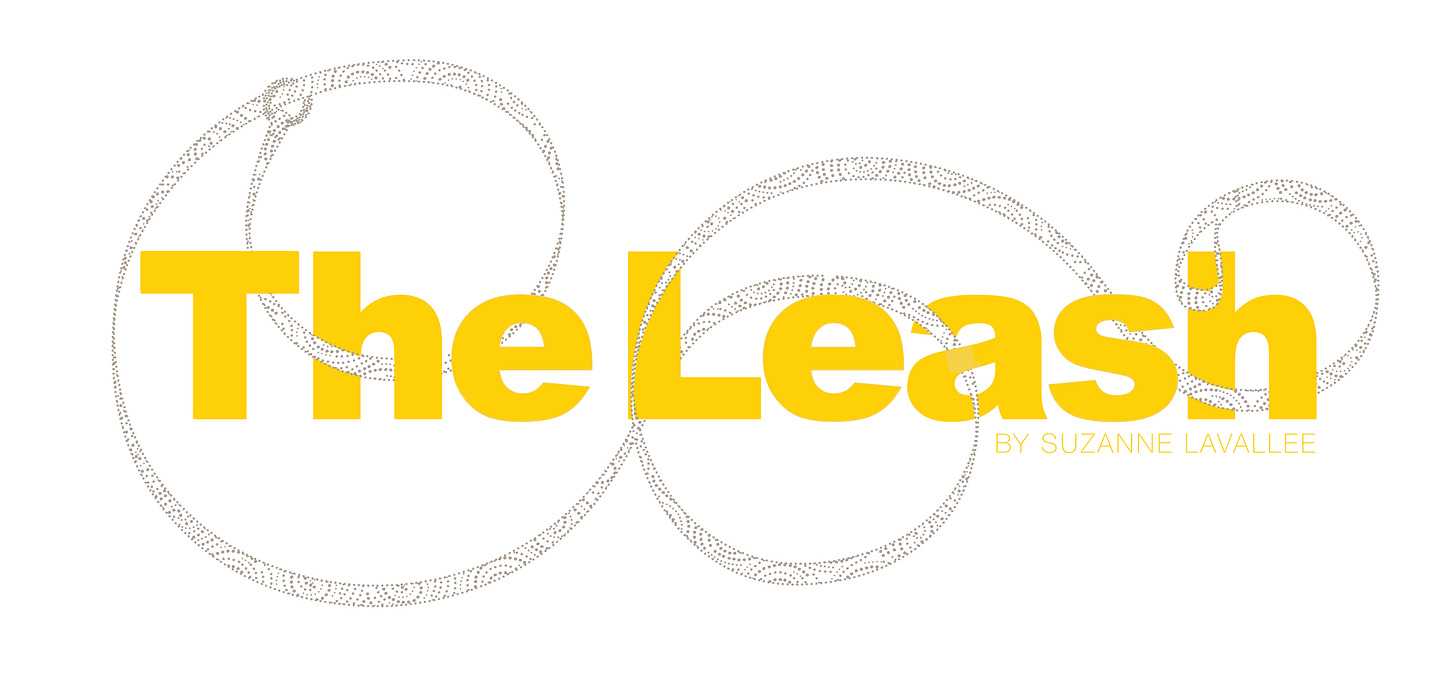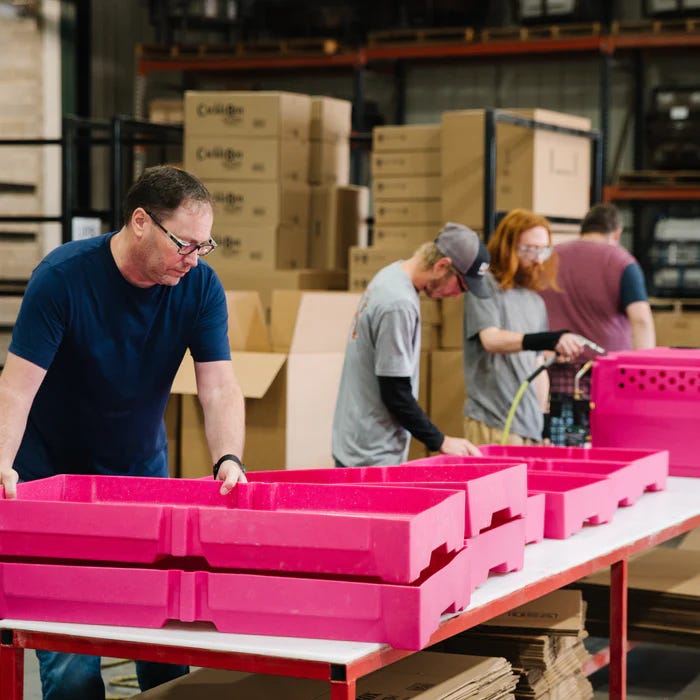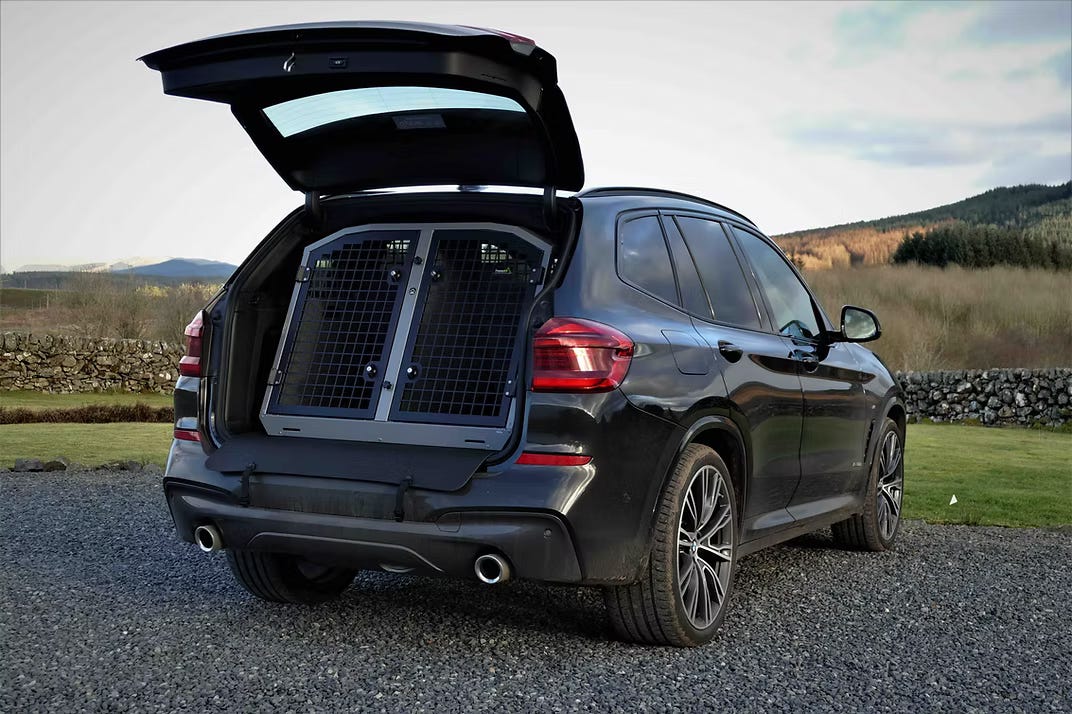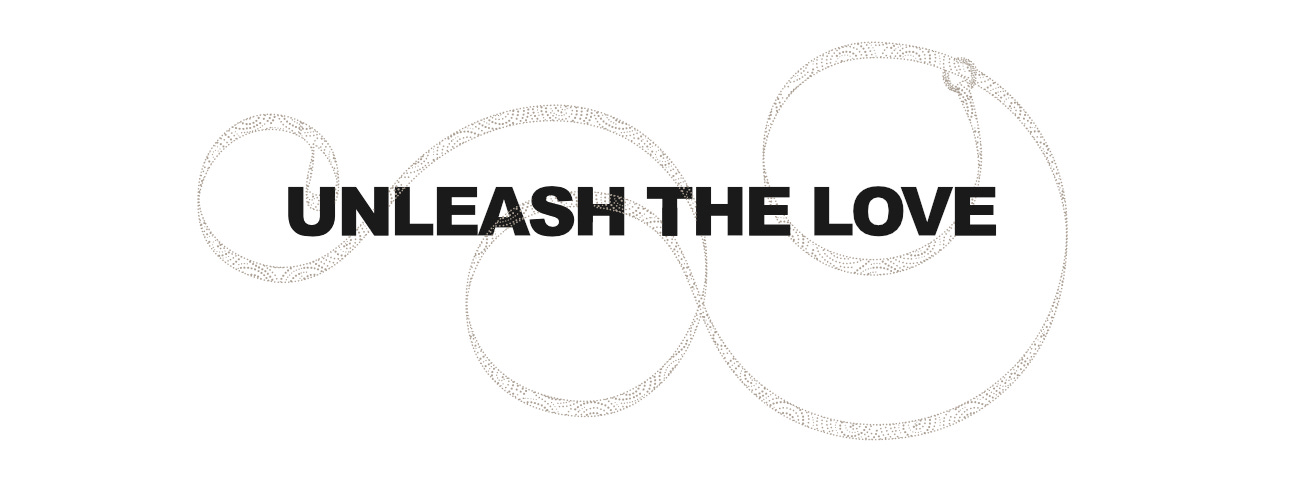Hello Lovely.
Let’s talk dog crates, shall we? Not the type we use in our homes, but the sturdy, crashed-tested ones that are securely tied-down with cargo straps inside our cars and are aptly referred to in the UK as “dog transit boxes”.
For those of you whose dogs partake in dv.’s outdoor adventures, you’ve more than likely seen the dog crates in my Sprinter van. You may even remember the ones I had in my Honda Element.
I’m such an advocate of using a dog crate for transporting dogs in cars, that I’ve written this into the requirements for my nonprofit. Before any of our psychiatric service dogs go home with their human, they must have a crash-tested, dog crate inside their car and it must be securely tied down.
The best analogy I have? It’s like California’s law on children under the age of two riding in a car seat. It’s a law for a reason: safety.
I’ll ease into this month’s issue by explaining the practical everyday advantages of using transit boxes inside our cars then glide into weightier reasons which culminates in preventing catastrophic injury or even death — to dog or human.
Load up and buckle up.
xo ~ Suzanne
Containing the Mud and Wet
One of the more immediate and satisfying results of having my dogs ride inside their transit boxes is that it helps contain the mud, dirt and water that is usually on their bodies in some capacity. They are active ranch dogs after all.
Whether it’s the rainy season or summer swimming or morning dew on the meadow grass the crates significantly reduce the dirt, fur and splatter inside my car thus helping to keep it in better condition.
When it comes time to cleaning the inside of my van it’s far easier and quicker than if I allowed the dogs to ride crate-free since the bulk of that detritus is contained within the crate itself.
Bodily Fluids
Some time ago, when I was in my late twenties, several of us enjoyed a day trip through the pastoral hillsides and communities of western Connecticut. After our hike we headed to a pub for lunch. My brother, his posse and my un-crated German Shepherd were in the VW Beetle leading the way — my husband and I following behind.
At some point along the drive it became abundantly clear that my dog had a “bum explosion”. This epic blowout of diarrhea splattered everywhere, windows were open, people’s heads were hanging out the window to get the tiniest bit of fresh air.
It was laugh out loud funny because I wasn’t in the car. It was also cringe-worthy because I knew the horrible mess I would need to clean.
While there isn’t much we can do to prevent our dogs from vomiting, regurgitating or ‘pooping through the eye of a needle’ while we are driving, we can contain a massive amount of this mess if they are crated.
Believe me, it’s far easier to clean and disinfect a dirty dog crate and dog than it is to clean the entire inside of a car, plus the dog.
Air Flow
Airflow in your car, or lack thereof, is certainly most notable during the summer months. In Napa Valley, California that’s about 6 months of the year (the “endless summer” isn’t just a slick slogan).
Having your dog crated inside the car allows you to slide your van doors wide open or roll the windows down all the way (there are even fans you can attach to crate doors) for those moments when you need to stop the car and get out.
So whether you’re making pitstops on a road trip, popping into the grocery store for a few last minute items on your way home from a hike or swinging by your friend’s house for a quick hello, you can make certain there is appropriate airflow if your dog is crated.
Interior Damage Control
I’m betting that many of you, at one time or another, have experienced the damage that dogs’ teeth and claws can do to a car.
Chewed seats, consoles, emergency brakes (they kinda look like sticks), armrests or anything they can get their mouths on.
I know I’m stating the obvious here, but — if your dog is riding inside its crate it cannot do these things. This will reduce your blood pressure; not your wallet.
Preventing Catastrophic Injury or Death
This is the BIG ONE.
The single most important reason to have our dogs ride inside a crash-tested dog transit box that is securely tied-down with ratchet straps to the cargo brackets in our vehicles is to prevent catastrophic injury or death in the event of a car accident. This applies to both our dogs’ safety and to our safety.
Like us, a dog will more than likely experience shock from a car accident. It’s a terrifying event for us and for them. Whether crated or uncrated, they are likely to be traumatized.
An uncrated dog can become a projectile in an accident.
An uncrated dog that survives impact and can still move its body has a much greater chance of escaping the car — and has the potential, through fear, to either go on the run or be hit by oncoming traffic.
It’s awful stuff to think about, let alone experience.
Brands of Transit Boxes
Nowadays, there are a plethora of transit box brands to choose from. When I was involved in dog sports (way back when) we had limited options. The market was much smaller and if you wanted a heavier-duty dog crate, the only option was finding a fabricator for a custom made one. While the latter still exists it’s nice to know there are standardized options that provide safety and security.
Below are a few of may favorite selections — listed in alphabetical order, no favoritism here.
Take your time and explore these websites. Learn about their products. See if the crates are crash-tested. Make sure they meet your specific needs and wants— as well as those of your dog and your vehicle.
Get to know the companies. Read the testimonials.
These are small businesses with interesting stories — all of whom are in the business of making sturdy dog crates to protect our dogs while riding inside a vehicle.
And to boot, many of them design and manufacture their products in the United States.
If any of these peek your interest and you have questions, drop them an email. They are responsive. I know this because I reached out to each of them a few years ago when I was deciding on which brand would outfit my Sprinter.
Good luck and enjoy the process! If you’re local and want to see my Ruffland Kennels first-hand just let me know. Happy to do so.
Dakota 283
Dakota 283 is a natural extension of Greg and Jane Cronkhite’s custom rotational molding company, Sterling Technologies. Early in the company’s history, they started with the manufacturing of military cases for defense contracts.
They simply applied their knowledge and skillset of military-grade applications to create the Dakota 283 dog crates. It’s created in one sold piece and is offered in a variety of sizes, styles, and colors. Made in the USA.
Website: www.dakota283.com
Gunner
Gunner crates are one of the safest on the market — double-walled and crash-tested, they provide twice the shock absorbency and superior thermal properties than their competitors.
You can find oodles of testimonials, including first-hand accounts and photos from customers (and their dogs) who survived car accidents. CNN states, “Tons of dogs (and people) have been saved thanks to these crates.”
Gunner crates come in a variety of sizes and colors. Made in the USA.
Website: www.gunner.com
RuffLand Performance Kennels
This is the company I chose to go with to outfit my Sprinter van. RuffLand Kennels offer a variety of sizes, styles, colors (including seasonal drops) as well as single and double-doors — including various door configurations. This is truly a huge perk.
Based on where I planned to put the crates in my van I chose double doors, front and back, to allow for excellent airflow and ease of access — both for everyday use and in the event of accident.
I also purchased RL’s tie-down kits that attach to the pre-drilled corners of the crate and simply used ratchet straps we have on hand (bought at my local hardware store).
Website: www.rufflandkennels.com
TransK9 USA
To me, TransK9 crates are deliciously stylish. Functional, crash-tested eye-candy. Anytime I see one inside a car I take a moment to look at it.
Their attention to detail is impeccable.
From locking front doors and a rear escape hatch to a removable crate divider and a thin rubber mat on the crate’s topside to prevent slipping of the various gear you may toss on top of it — they have thought of it all.
They offer an extensive selection of crate options to best match your vehicle. It’s impressive.
These seem to be the crates of choice in the UK. To date, in over 20 years of visiting the UK it’s the only transit box I’ve ever seen inside a car. I know there are others in use, but I’ve only ever seen TransK9 — whereas here in the United States I see all sorts of different crates.
When I had my Honda Element, TransK9 was my crate of choice. It served my dogs and I extremely well over the years.
I was gutted when it was time to sell my Element — both because of my affection for the car and the TransK9. It does seem a bit weird to have an attachment to inanimate objects like these, but I did.
TransK9 crates are designed and manufactured in Scotland and available in the US.
Website: www.transk9usa.com
Zinger
Another striking, sturdy and functional crate with oodles of customization options (sizes, models, door configuration, etc.) is made by the brand Zinger. While their crates are not officially crash-tested through an independent organization (as of this writing), there are testimonials from individuals whose dog and crate survived car wrecks as well as a solid statement from the company on their FAQ page.
Zinger crates are made from aircraft-grade aluminum, known for its durability and strength, and are designed to withstand rough handling and shifting cargo loads.
Website: www.zingerwinger.com


